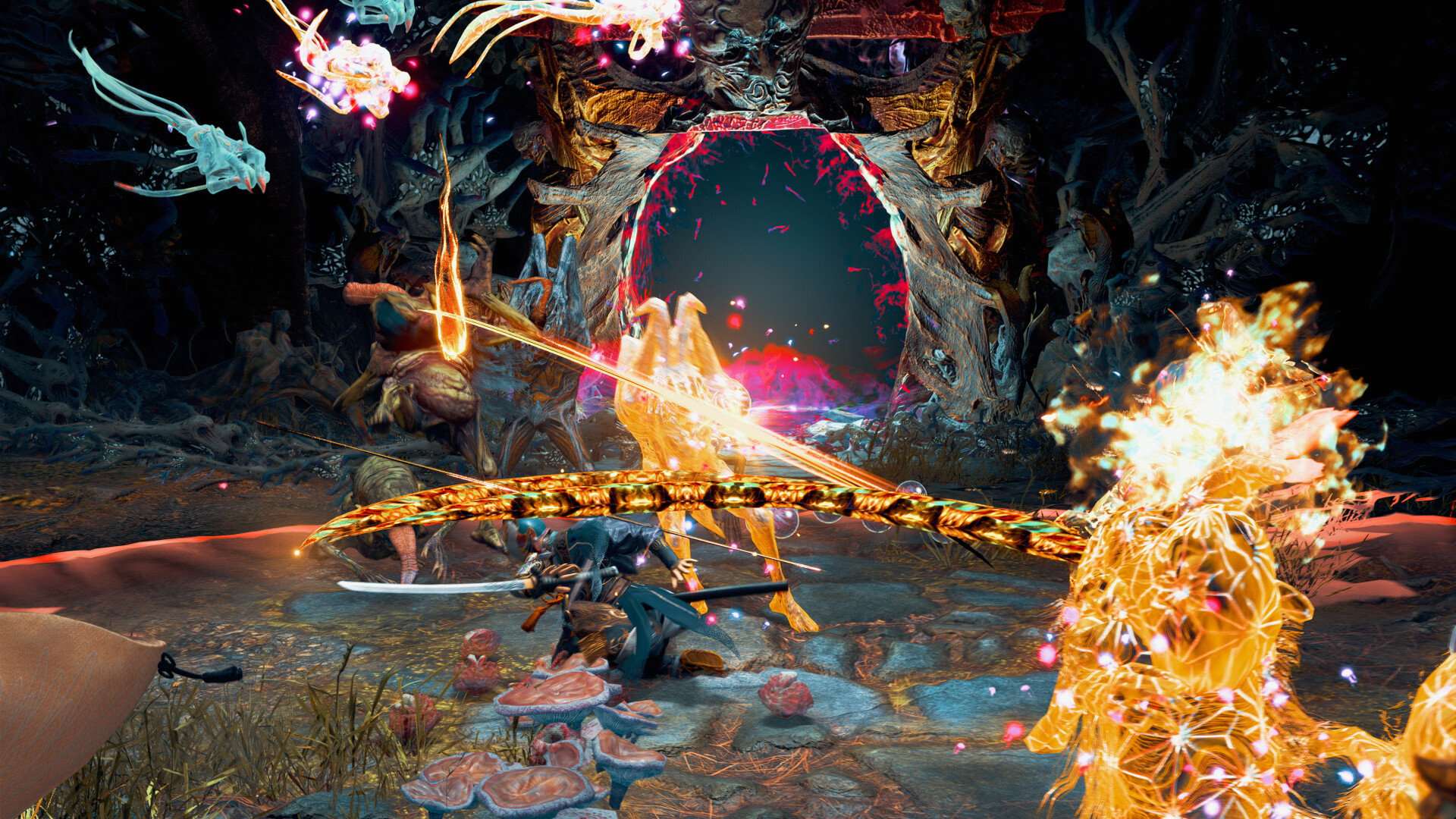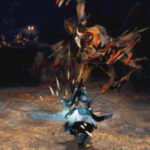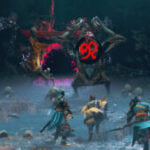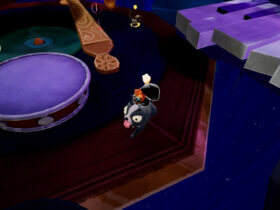Who said that every product must necessarily fit into a well-established genre in order to sell on the market? Who says there is no room left for experimentation, to explore more varied paths capable of offering something decidedly “fresher” than “what is usually seen”? Capcom, with its brand new IP Kunitsu-Gami Path of the Goddess, has decided to take a risk, proposing – at the price of any triple-A title – a decidedly more atypical adventure, which certainly has some precedents, but is easily understandable as not corresponding to what the general public expects. From the game philosophy, oriented towards an apparently very precarious balance between action and strategy; fascinating also from the Eastern perspective, but not perfectly framed – there is Japan, there is a samurai, there are Kagura masks, but everything is not peaceful, not trivial and “seen many times before”. If you don’t know what we’re talking about, and if we have at least aroused your curiosity, you should definitely read our review of Kunitsu-Gami Path of the Goddess, and discover, perhaps, your title of the summer.
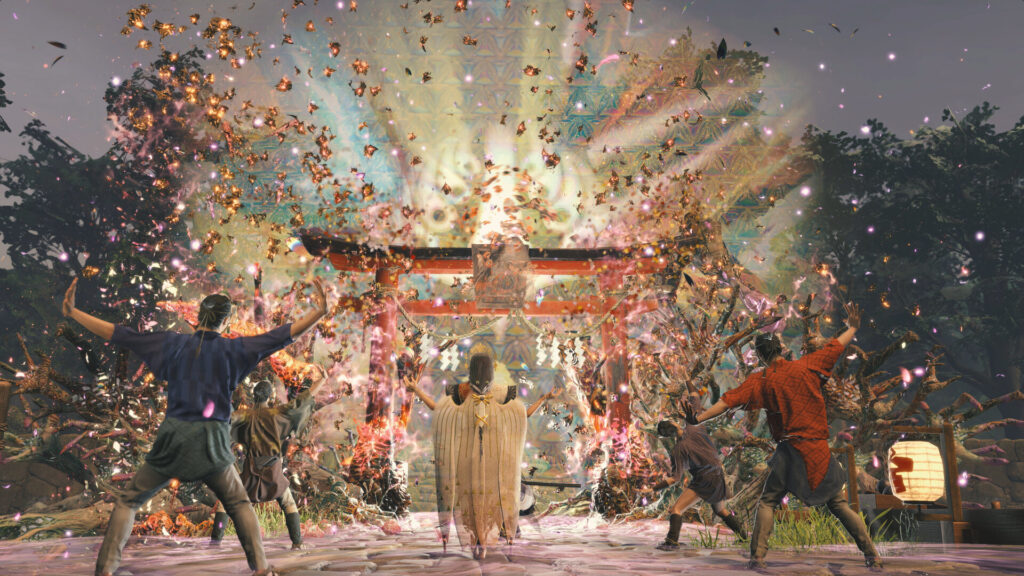
Saving Mount Kafuku: the plot of Kunitsu-Gami Path of the Goddess
Kunitsu-Gami Path of the Goddess is entirely set on Mount Kafuku. The invasion of the place by demons, known as Furies, has brought the local population to its knees: darkness threatens to take over life at every moment, extinguishing it forever. But here the priestess Yoshiro evokes Soh, a mystical warrior who fights, in a dance-like manner, with a lethal katana, and is able to hold his own against the foul beasts. The task of the supporting characters in the Capcom title is to recover the masks from the various villages, which are currently corrupted by the invaders from the other world; by putting them back together, it will be possible to purify Kafuku once and for all, thus restoring the balance of the world and pushing the Furies back. Easier said than done, given the extremely high number of invaders and the presence of gigantic leaders among them – a bit like the real infernal hordes.
The Japanese folklore of Kunitsu-Gami Path of the Goddess is wisely blended with masks and Kagura culture; the setting, composed of rural villages that closely resemble medieval Orientalism, uses magical and supernatural elements “justified” by the culture of origin. Here too, a remarkable balance is noted between “the already known” and “the will to dare”, because we have seen many videogames that have drawn heavily on Japanese mythology and culture in the past. Kunitsu-Gami Path of the Goddess tries to do this with discretion, adding its own “peculiarity”, which is given by an “aesthetic” management of the battle dynamics: art and dance, with their delicacy, add a sublime touch to the entire production, clashing sharply (in a discovered antithesis) with the violence of the beasts, and with the darkness of the underworld. The result is a (at times cryptic) plot and a (more silent than explicit) narrative that are fully satisfying, although of course they must correspond to the personal taste of the player (as in our case).
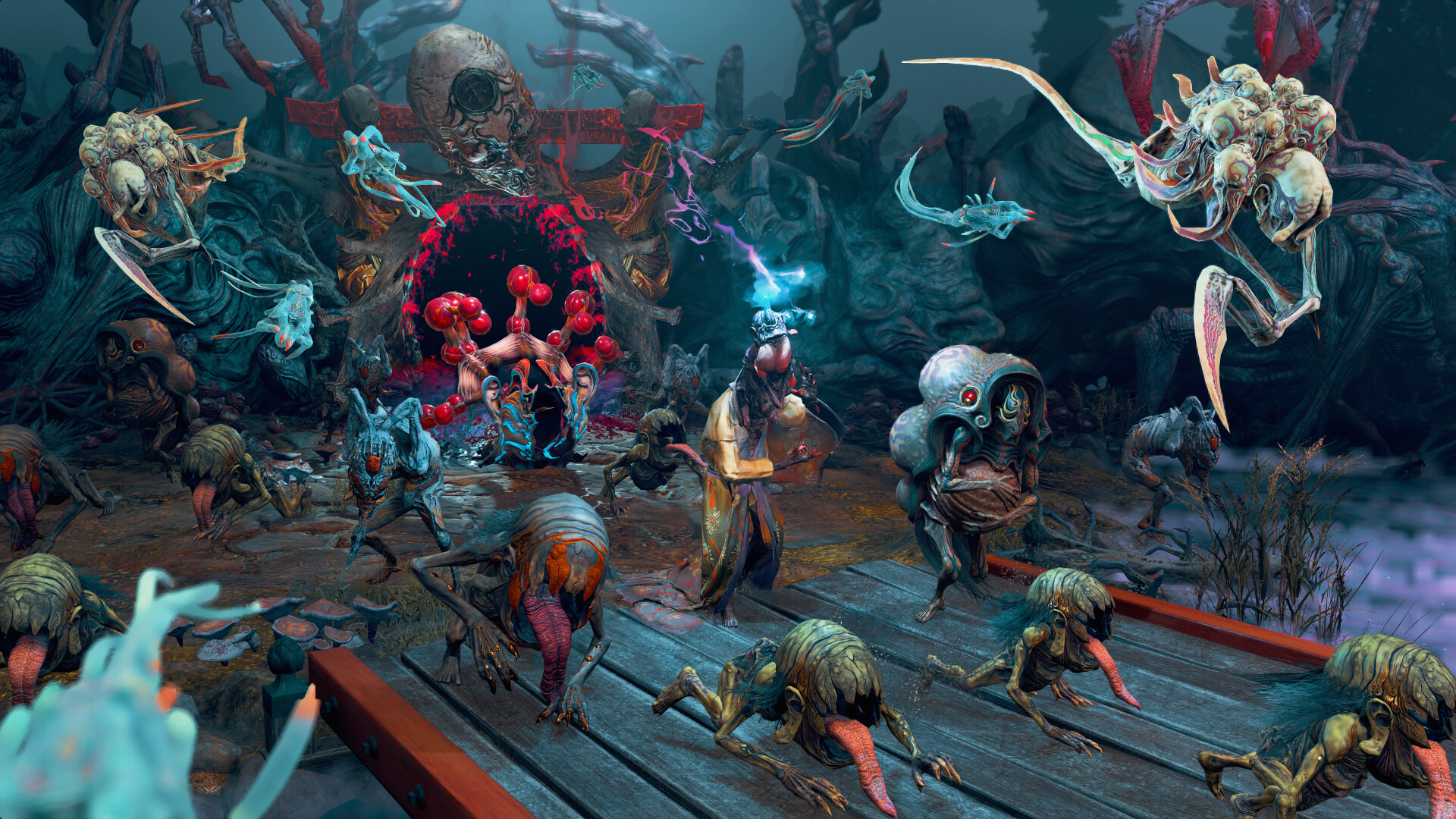
FFF: Far Out the Furies
The balance of the soul in Kunitsu-Gami Path of the Goddess is also evident in the gameplay. The game is harmoniously set in a progression that unfolds in two different phases, corresponding to the cycle of day and night. During the day, the villages are active – provided they have been liberated; you can upgrade your protagonist, send NPCs to work, explore around, and gather collectibles. At night, the Furies arrive, and battles are fought with magic and katanas. In fact, it is during the dark hours that the main narrative continues: each level requires moving the priestess along a linear path from A to B, to the Tori gate that must be purified to complete that specific level. But when night falls, Yoshiro’s journey stops, and everyone else must protect her from the monsters. Here begins the mechanic we defined as FFF: Far Out the Furies. This requires action (as the main protagonist, directly controlled by the player) and also by NPCs, who become impromptu support warriors.
During the day, Soh finds “corrupted” pods containing other humans: by purifying them, he gains a small personal army, each member of which can be assigned a specific role (starting with the woodcutter, the basic warrior, and progressing to the archer, the mage, and many other roles). These NPCs are assigned to their tasks somewhat like the Pikmin in the titular game: you can tell them where to go and what to do, whether to opt for aggressive offense or more cautious defense. Each level is designed to favor a specific class, and each class can be upgraded at Yoshiro’s tent, which is available not in standard levels but only in the villages that replace the “initial combat levels” as you complete each one. Once each area is cleared of the Furies, that zone becomes a peaceful base camp, where you can rest and upgrade; then the fight against the area’s final boss unlocks in a dedicated area; and then it starts again with another level. By the end of the game, the entire mountain will have been saved… provided you don’t perish during the arduous task.
Japanese Art
The entire Kunitsu-Gami Path of the Goddess is based on the charm of Eastern art, specifically on combat with katanas and ritual dance: this is evident even in Soh’s basic, charged, and special attacks. The Japanese charm, however, also underpins the more general artistic direction of the Capcom title, which exudes care, attention to detail, and love from every pore. The levels, though not particularly vast, are meticulously detailed, and it is also possible to observe them very closely; the camera can be rotated 360 degrees, and the zoom system brings the perspective closer and further away without any pixelation.
From a technical standpoint, Kunitsu-Gami Path of the Goddess has nothing to envy in the most renowned titles of the current generation, being truly solid and well-crafted in this regard. The frame rate is practically stable and anchored to the maximum set by the developers, with drops reduced to a minimum. Additionally, the distinction between cinematics and actual gameplay is hardly noticeable, favoring a smooth transition between played and non-played parts, well suited to the overall harmonious atmosphere of the entire production. The entire title is available in Japanese or English (for obvious reasons, we recommend setting Japanese as the default language), with subtitles in Italian and the Italian language also in all on-screen menus. This way, you can immerse yourself in what we believe is one of the most inspired renditions of Japanese folklore ever played!
Kunitsu-Gami Path of the Goddess is, as you may have guessed, a very original hybrid: Capcom wanted to experiment with a new path suspended between action and reflection, between action and strategy, all seasoned with that Japanese sauce which, despite its elements of graceful originality, made it possible to propose an artistically “welcoming” title for the curious (the Western audience’s “hunger for the East” is well known). It is not perfect, but very solid, also balanced in terms of longevity and replayability; and it is, above all – controller in hand – very fun, honest in its learning curve, immediately accessible, but capable of offering challenges for the more experienced (and for those who will become so along the way). That it is recommended should be obvious simply from reading this piece; but given its potential, in reality, we expect even more, either through expansion or directly with a probable sequel. The response from the public will determine the possibility of seeing both.
https://www.youtube.com/watch?v=ZuVS2SpFQz4


